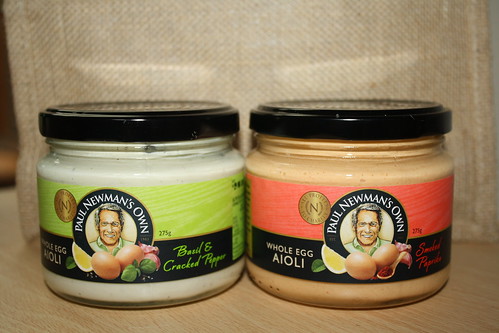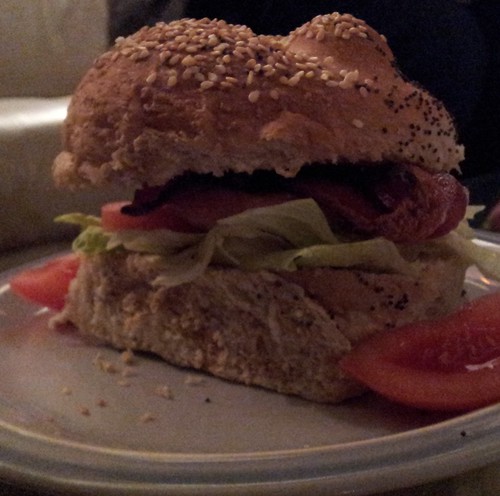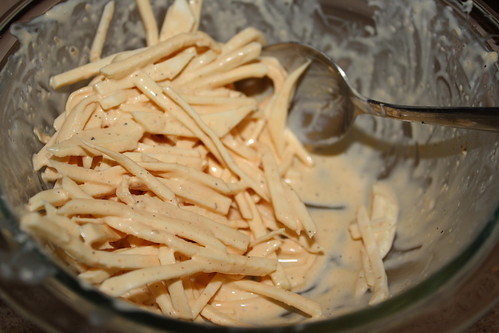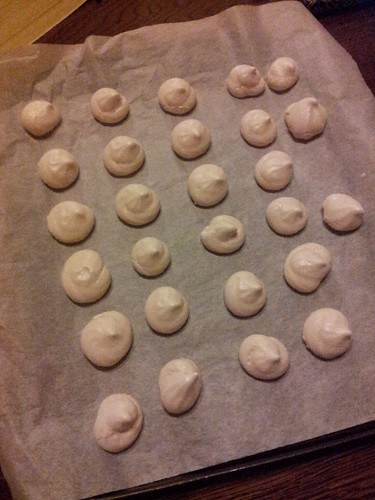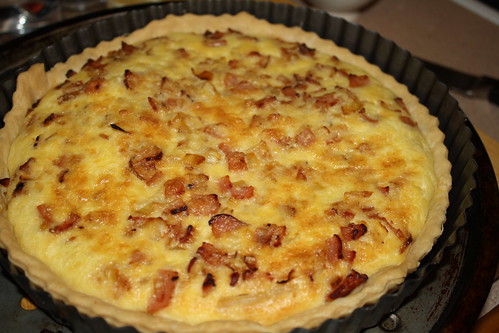Disclaimer: I was sent the two new aiolis to try and Paul Newman’s Own has supplied the prizes.
I know that if you turn on a cooking programme on tv you’ll see a chef/cook/contestant whipping up mayonnaise or aioli in a matter of moments. And I’m pretty sure that most people don’t actually do that at home. We don’t do that at home. And do you know why?
Because when we want mayo or aioli we usually want such a tiny amount that the effort to make our own just never feels worth it. Plus, the whole point of having a BLT for dinner is minimal effort!
Paul Newman’s Own has just introduced two new aiolis to sit along its plain aioli: basil and black pepper and smoked paprika. The first thing I was impressed to note is that the products are made with the same things that you or I might use: oil, egg and no artificial flavourings.
Paul Newman’s Own is also a not for profit entity: all profits go to the Newman’s Own Foundation and they are then distributed to charities in the regions where the products are sold. So when you buy any of the products you can be confident that the profits will be directed back to charities in Australia, if not South Australia.
Last year, for example, the Foundation’s focus areas were children with life-limiting conditions and (fittingly, for a food company!) nutrition. South Australian charities that benefited were: Australian Cranio-Maxillo Facial Foundation, Day of Difference Foundation, Down Syndrome Society of SA and The Epilepsy Centre. (Check out the website for the full list of Australian 2012 recipients).
However, all these warm and fuzzies are just a bonus – they’re not the thing which will get you buying the products in the first place. That all comes down to taste.
I was sent jars of both the basil and black pepper and the smoked paprika aiolis to try out. The basil and black pepper aioli had an outing on the lazy Sunday night dinner: the BLT, while the smoked paprika I used to make a very quick and simple celeriac remoulade.
admittedly, this could be any random BLT … but trust me, it has aioli in it!
Of the two, I definitely preferred the smoked paprika aioli. This had a stronger flavour all round and definitely a stronger garlic flavour. The basil and black pepper was very subtle on the BLT (maybe I’m too stingy!) but tasted on its own, the fresh basil flavour does come through.
For the remoulade, I simply chopped the celeriac very finely, put it in acidulated water and, after draining it, mixed through the aioli. This is a very easy way of doing remoulade and you could complicated it by mixing through a little sour cream or crème fraîche, or some mustard – but the beauty of the smoked paprika is that you don’t need to do any of that.
I also thought that both would work really well as a dip on a plate of crudités. They’re very pretty colours and the garlic is not overpowering.
If you’re interested in trying the new aiolis, you don’t even have to head to the shops. Paul Newman’s Own has FIVE prize packs (one of each aioli in a cute bag) for Eating Adelaide readers.
Entry is easy – just use the Rafflecopter entry form below*.
*Ts&Cs:
You must be resident in Australia (and have an Australian postal address).
The only mandatory task is liking Eating Adelaide on Facebook.
Winners will be contacted by email, and published on the Eating Adelaide Facebook page. They will need to respond within 48 hours, otherwise I will redraw.

